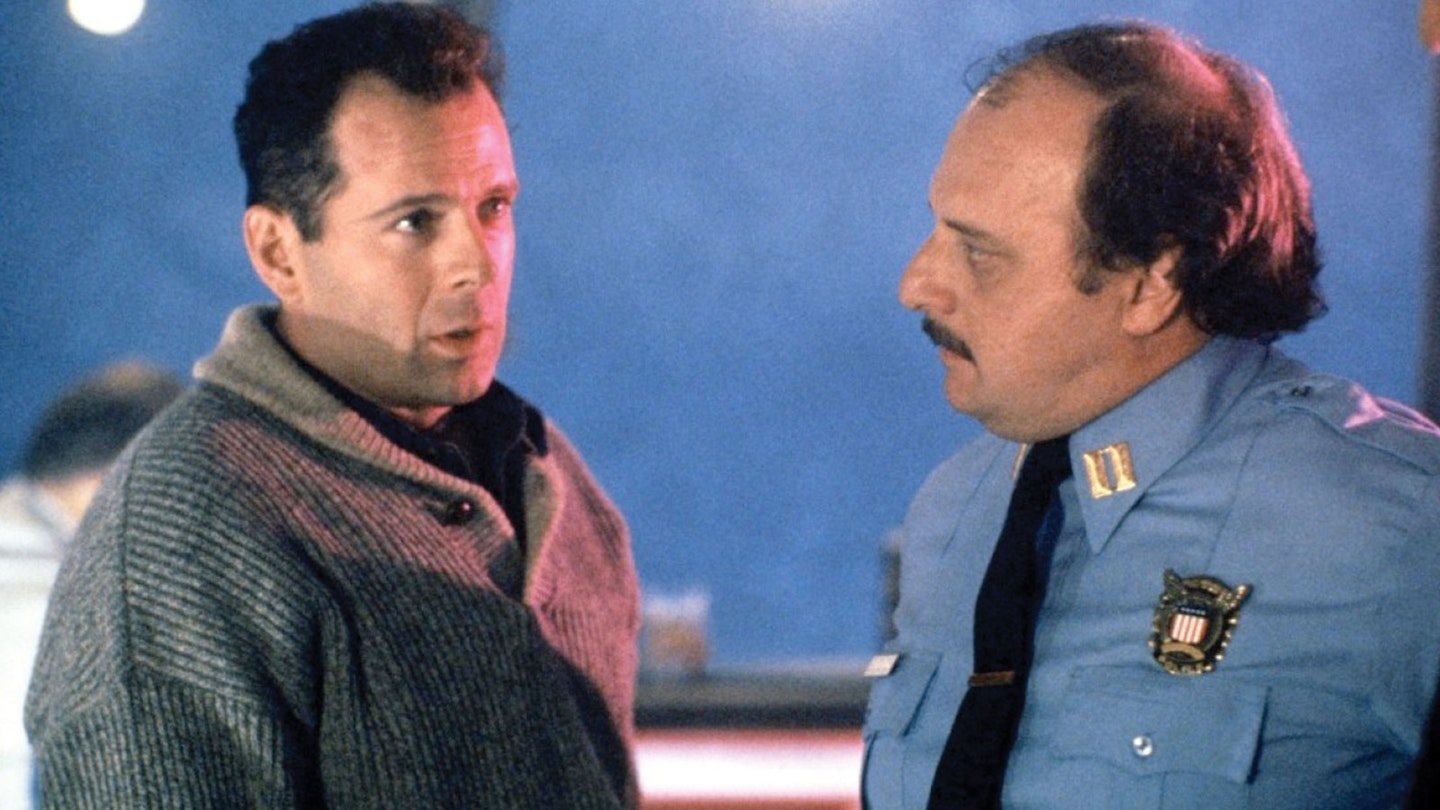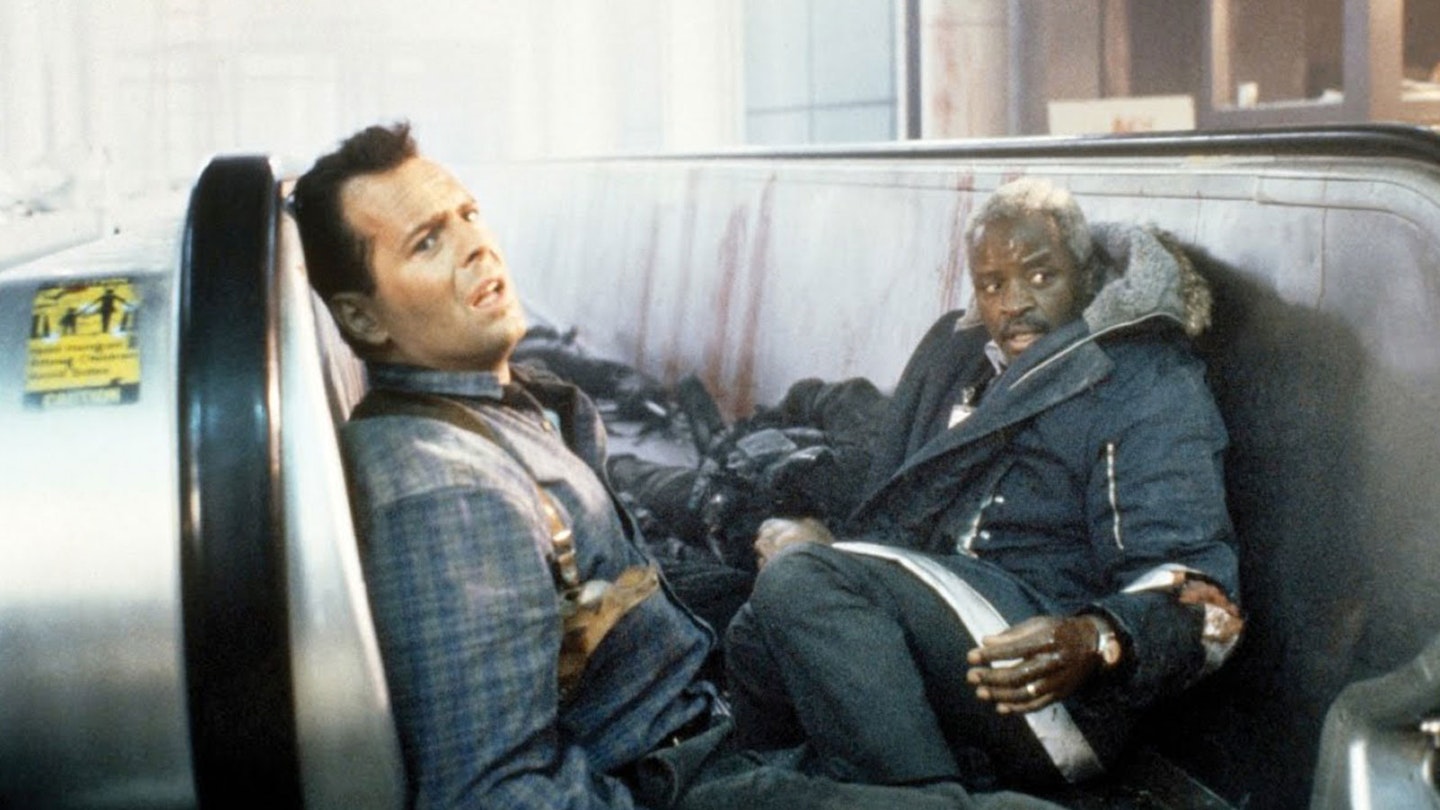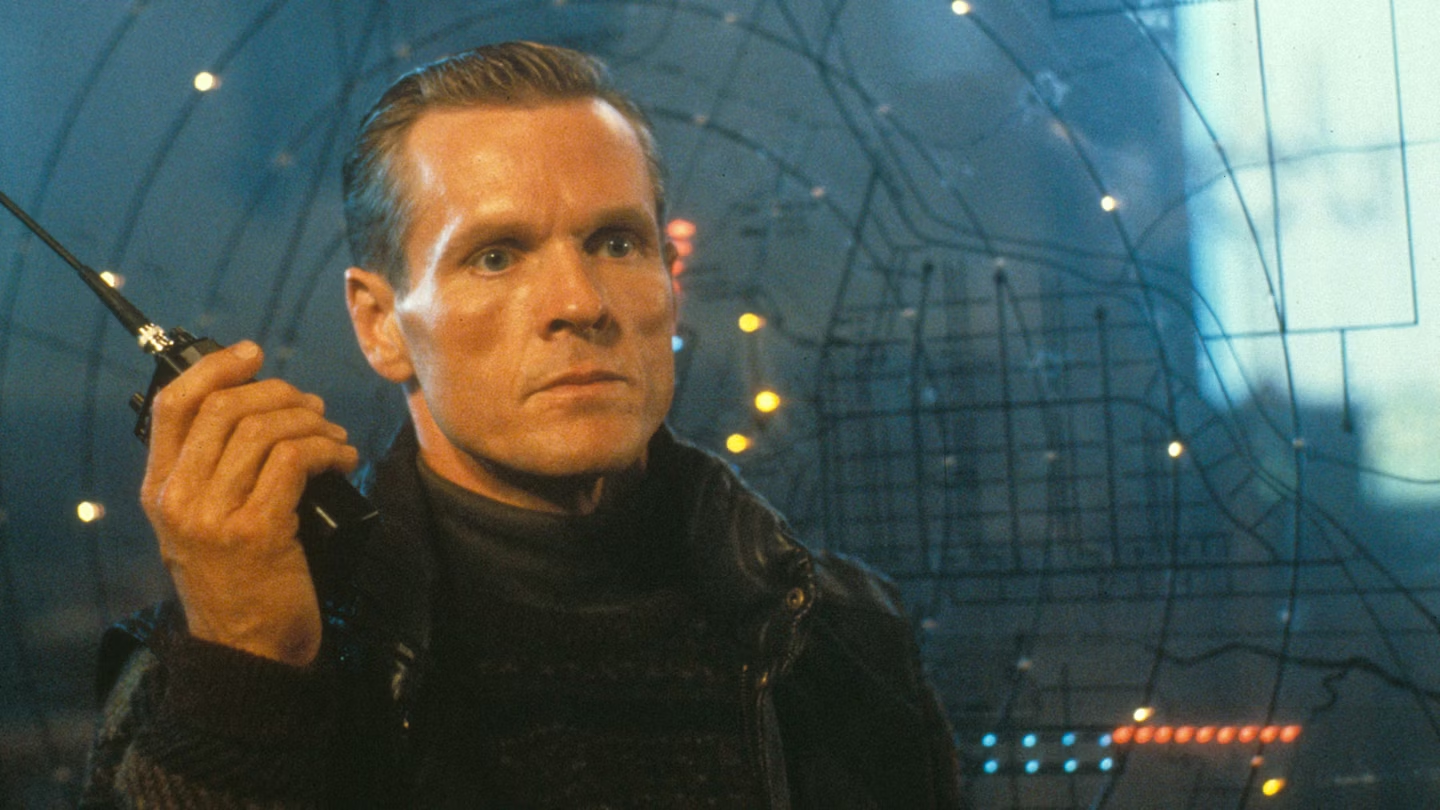This piece was originally published in the January 2021 issue of Empire.
Every single year, at around this time, an argument erupts on the internet: is Die Hard a Christmas film? You’ll note, however, that nobody ever questions whether its 1990 sequel is one, because Die Hard 2 is absolutely as festive as a film with a triple-digit bodycount can be. Unlike the original, there’s snow everywhere. There’s a reference to “a fuckin’ reindeer flying in from a fuckin’ petting zoo”. And beleaguered cop hero John McClane even drives a sleigh-like snowmobile. “Eggnog, a fuckin’ Christmas tree, a little turkey,” he laments at one point. “But, no! I gotta crawl around in this motherfuckin’ tin can!”
Orchestrating this violent seasonal spectacular, in which another band of terrorists take over Washington DC’s Dulles Airport, proved no simple feat for director Renny Harlin. Not only did logistical problems cause the project to run wildly over budget, but Harlin faced enormous pressure to live up to the original Die Hard, aka the Greatest Action Movie Of All Time.
And then there was the issue of working with Bruce Willis, suddenly a gigantic movie star and not shy about giving his opinion. The Finnish filmmaker, only 30 at the time, gritted his teeth and got on with it. The end result was a sequel that not only made back its money and then some (the total haul was $240 million), but garnered decent reviews (Roger Ebert even said he preferred it to the original). Three decades on, Harlin casts his mind back to the whole testing experience, in which even getting his lead character to say, “Yippee-ki-yay” required some finesse.

EMPIRE: Screenwriter Steven de Souza maintains that the first Die Hard is more of a Christmas movie than White Christmas. Do you think of your one as a Christmas movie?
Renny Harlin: Yeah, I guess I do. When we were putting it together, we wanted to have Christmas themes there, from the presents that the terrorists are carrying to the Christmas tree and the carollers at the airport. And we see them pretty briefly considering they cost us a lot of money, but I also insisted we have reindeer at the airport in the opening scene. We did everything to give it a Christmas vibe.
You also have the tremendous moment in which John McClane kills a bad guy with an icicle.
That’s actually one of the things that people often mention. It really came from me having grown up in Finland, and dealing with icicles all my childhood in different forms. Either them falling on my head, or us using them as weapons as kids. So icicle death to me was perfect.
"It was the warmest winter in North America for, like, 60 years. So there was no snow anywhere."
Did many things in the story come from you?
Yes. I don’t want to take anything away from Steven de Souza, who’s a great writer. But I would say he wasn’t a real stickler always for logic and details. He just liked writing fun scenes, and then my duty as director was to figure out how they go together. At one point Bruce had to get from A to B really quickly, undetected. And I said to Steven, “How does he get to the other side of the airfield?” He was like, “Oh, I don’t know, he just runs there.” I said, “Well, that’s not possible, for all these reasons.” So I invented a giant tunnel under the runways, which I’m sure doesn’t exist in real life.
Maybe the biggest one was the cargo-plane scene, where he’s surrounded. I said to Steven, “How does Bruce get away from this impossible situation?” He’s like, “Maybe there’s a back door and he just runs away.” I go, “That’s really lame.” So I thought about it like crazy and then came up with the idea that he straps himself into an ejection seat and it shoots him out of there at the last second. I knew that it didn’t make any sense — there’s no way a cargo plane would have an ejection seat. But nobody ever complained, not even the people who pick these movies apart.
You must have been a bit fearful of what fans would make of the film, given the love for the first one. And you were so young at the time.
When I look back, I think, “Did I realise how young and inexperienced I was?” I was very passionate and confident, but not cocky, because I really had huge fears and doubts. We shot so much at night-time too, and I was just really stressed about not being able to sleep. So yes, I felt huge pressure. It’s no secret that the movie went over budget and over schedule. Not because we didn’t plan things carefully — I was super-organised and responsible — but because it was the warmest winter in North America for, like, 60 years. So there was no snow anywhere. We were literally hunting for snow around the country and in Canada, while we were leasing this whole armada of aircraft — the 747, the L-1011, smaller planes, helicopters.

I remember the most horrendous disappointment was when we went to Spokane, Washington. We got there and everything looked great. The aircraft was white. It was perfect. So I went to sleep for a few hours to be ready for the night. And when I woke up and looked out the window, I couldn’t believe my eyes, because the grass was green and there was not a snowflake in sight. They’d just had an unusual heatwave that melted everything.
Didn’t you end up using fake snow?
Yes, potato flakes or some other material. One night we were by the church we had built close to Denver, and we had the local fire department there covering acres of fields with fire foam to make it look like snow. The night came and we were ready to shoot. And then, out of the blue, a ginormous blizzard hits us. It became unsafe to do anything and we all huddled behind a shed, trying to find protection. Joel [Silver] looked at me, deadly serious, and said, “I don’t know... This time I just might have too much on my plate.” That’s when my blood froze.
Why?
Because up until then he’d been the best possible producer. Studio executives had started showing up on our set — they come there with their coffee cups and stand behind you. They want you to cut corners or somehow in some magical way just fix it. It’s terrible for a director. Joel took me aside one night and said, “Renny, I can see you getting stressed. Let me handle the studio, the budget, the situation. I want to see the movie that you dreamed of.” And he said, “Remember, if the movie’s a hit, nobody will care that we went over budget. But if the movie comes out and it’s not a worthy sequel to the first one, then the fact you saved us some money, nobody will give a shit. Make it the way you want to make it.” That gave me so much comfort. So when he broke down it was scary. But we survived the night, and at 4am we shot the icicle fight. Though I had to make it much shorter than what I wanted it to be.
"Every single funny moment that could be caught — even a smile Bruce might have flashed before he realised the cameras were rolling — was cut into the movie."
How about Bruce Willis? What was he like to collaborate with?
Bruce had turned from a Moonlighting TV star to a movie star overnight with one movie. And it’s not uncommon that when actors get into that position, they sort of develop different goals. So Bruce had this notion from the beginning that he wanted to now play John McClane totally straight, that this movie had to be serious. I said to him, “That’s not the John McClane the audience loves. They feel like you’re their friend now, and they don’t want to lose their friend.” We had a major disagreement about this. He said, “Those one-liners and jokey comments — that’s bullshit. With lives on the line, you can’t say that kind of thing.” I said, “Yeah, not in real life, but this is a movie. This is Die Hard.” It came to a point where I had to go to Joel and say, “We have a real problem.”
We had a big meeting, Joel and Bruce and I. The outcome was that Bruce agreed to do as many takes as he wanted of the way he wanted to do it, and then we’d do one take the way I wanted to do it, with humour. He did it reluctantly, and not so happily, but he did it. And in the end, every single funny moment that could be caught — even a smile he might have flashed before he realised the cameras were rolling — was cut into the movie. The first question the executives asked, when they saw it, was, “Do you have any more moments with humour?” I said, “Unfortunately, I used everything I had.”

Was there a particular battle over that which you can recall?
One of the days when it was just painful was the little scene where he needs to send a fax to his buddy in LA, with the fingerprints of the bad guys. He finds a counter at the airport, and this lady has a little bit of starry eyes for this cool guy. And then Bruce shows the ring on his finger and says, “Just the fax, ma’am. Just the fax.”
It’s a great line.
Bruce hated that. He said, “That is so cheesy and stupid. I refuse to say it.” It took an hour there at the counter with me begging him and Joel getting involved to get him to say it once, out of 15 takes. But it’s in the movie and people love it. It’s not just funny, it shows he cares about his wife. It makes him relatable and really an honourable guy. Because it’s not just about saving the world — it’s about something much more personal.
It sounds like a pretty gruelling shoot. But was there a day that was particularly joyous for you?
I always remember the day when somebody came to me and said, “Would it be okay if Mr Martin Scorsese comes and visits the set? He really wants to see what you’re doing.” It was the whole air-traffic control tower we built, which was amazing. It was on in the centre of the biggest soundstage on the Fox lot in LA, and around it the entire floor was the airfield. There were runaways getting smaller and smaller, in forced perspective, with miniature planes on wires, and three different sizes of plastic snow falling from giant mills in the ceiling. This set became really famous, in terms of everybody wanting to see it, how we created the illusion. Spielberg came to see it, too.
Finally, another thing from the first film you had to try to outdo was its iconic villain, Hans Gruber. Is that why you introduced Colonel Stuart doing naked tai chi in a hotel room?
I don’t want to start sounding like I take credit for everything, because obviously I worked with some great people who did amazing things. But I do take credit for that opening, because I wanted to establish a villain that is really an amazing specimen, mentally and physically. And after we cast Bill Sadler, I got this idea. I said, “I want you to be absolutely naked in the opening scene.” He was like, “You mean, in my underwear?” I said, “No. Naked. I want to really wake up the audience. I want you to be all sinewy muscle and tendons — a perfectly formed killing machine.” He said, “I love it.” For three months he did nothing but train with this trainer and nutritionist, working out probably six hours a day for this one small scene. Now every actor pretty much looks like that. But at the end of the ’80s, it was a whole new thing.
